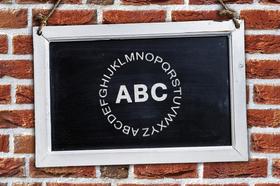Financial Aid 101
What is financial aid?
- Financial aid is money given by individual private schools to help families pay for a private school education.
- Private schools give families millions of dollars annually to help them afford a private school education.
What is the purpose of financial aid?
- Financial aid is one tool private schools can use to make their school more diverse.
- Yes, many years ago, private schools had a less-than-positive reputation for being elitist.
- However, thankfully, times have changed.
Being able to pay for a private school education is no longer the only admission criterion that matters. If your child has the qualifications that the school is looking for, but you cannot afford to send her, then financial aid is certainly an option that you need to explore.
Read what one of the most prestigious private schools in the United States of America has to say about diversity:
"Andover's broad socio-economic diversity is a hallmark of the Academy as displayed in the inclusive distribution of financial aid grants to low-, middle- and upper-middle-income families."
Phillips Andover, like a great many private schools, has a Need-Blind Admissions policy in place. What that means is that the school does not look at your financial circumstances as part of its admissions criteria.
- Ask whether the school to which you are applying has a Need Blind Admissions policy in place.
- Find out more about how it works.
This video offers a video of the Latin School of Chicago.
Each school's financial aid program is unique.
Because schools expect their fees to be paid in advance, you need to make sure that the amount due and payable will fit your budget.
- For example, let's say that the tuition, books, and all the other fees total $30,000.
- The school will expect a deposit to be paid in the spring before entry in the fall.
- The balance is typically due in two installments: one in late summer and the second payment at the end of the calendar year.
- The precise due dates for payments vary from school to school, as the schools determine their own specific payment schedules.
While you are investigating school curricula, sports programs, extracurricular activities, and so on, ask about individual schools' financial aid programs.
- Each school offers its own unique financial aid program.
- Do not assume that what you were offered at one school will be the same as what is offered by another.
Most private schools' financial aid programs offer grants.
- What is the difference between a grant and a loan?
- You do not have to pay back the grant. It is similar to a scholarship. You have to repay loans.
- Scholarships and grants are the best solutions for paying private school expenses whenever possible.
Who's eligible for financial aid?
Many families assume that they are not eligible for financial aid and do not apply.
- Everybody's financial situation is different.
- As a result, always ask about financial aid, even if you think you are not eligible.
Financial aid is available for low-income families as well as middle-income and upper-middle-income families.
- Many schools will offer a tuition-free education for applicants from families making less than $100,000.
- If your family income is over $250,000 and you have two children in college, and want a third child to go to private school, ask about financial aid as well.
School and Student Services gives schools a clear picture of your situation.
- Then the schools will be in a position to make a decision as to whether you will get financial aid and how much.
- Always ask about financial aid, even if you think you are not eligible or don't need it.
- School and Student Services is an offering of the National Association of Independent Schools.
- SSS provides a third-party, objective analysis of the financial data submitted to approximately 2,400 schools that subscribe to SSS.
This video offers a view of Sidwell Friends School in Washington, DC.
Who determines how much you will get?
The school does. When you ask for financial aid, most schools will require you to complete and submit a Parents Financial Statement (PFS).
- You do it securely online at the School and Student Services site.
- The site is well laid out and offers easy-to-follow instructions.
- It also has a very useful web tutorial, which I recommend that you watch before you start filling out all the forms.
What happens to your PFS after you submit it?
- It is analyzed by SSS to estimate what you can contribute towards your child's school expenses.
- SSS, however, does not determine what that contribution is.
- The school does. Schools base their determinations on the available funds, a family's need, and the school's own particular philosophy with respect to financial aid awards.
Where do you begin?
Use the same approach as you and your parents used when you were looking at colleges.
- When you first start thinking about and looking at private schools, cast the net widely.
- Look at everything out there, or at least as much as you can.
- Then make a list of about 10-15 schools that more or less fill the bill.
After discussions with family and friends and perhaps a closer look at the schools, narrow that list to 3-5 schools.
- These schools on your shortlist will have all the basics that you require: the educational approach, the curriculum, the sports programs, the extracurricular activities, and location.
- In your opinion, they will be a good fit for your requirements.
The next step is to determine if they are a good financial fit.
- Remember that there are other expenses besides tuition.
- Things like books, meal plans, uniforms, sports equipment, trips, clubs, insurance, technology, and transportation to and from school will add up very quickly.
- Be sure to include them in your estimation of the costs.
As you visit schools, discuss financial aid.
- Make it clear that you will need help sending your child to their school.
- Do not feel embarrassed about discussing financial aid.
- The schools will give you plenty of guidance here.
- More students than you probably realize will receive financial aid of some kind.
- Many will have their school expenses paid for completely.
How do you apply for financial aid?
Complete the Parents' Financial Statement safely and securely online.
- If you prefer, you can download the forms and complete them manually and mail them in. The online process is faster.
- The other advantage of the SSS process is that you only pay one fee. SSS sends its analysis to as many subscriber schools as you select.
- The few schools that do not subscribe to SSS have their own application forms.
- Ask for those well in advance when you decide to apply.
The applications require detailed information about your personal and family financial situation.
- Everything is handled confidentially by the third-party organization known as the SSS.
- As mentioned previously, SSS only analyzes the data that you give it.
- Then it reports the estimated contribution that you can make based on that data.
- SSS then sends those analysis results to the schools to which you have requested the report be sent.
What about deadlines?
If you are applying through the School and Student Services site, the deadline is December 31.
- If you miss that deadline, you will need to contact the school directly about financial aid.
- As a general rule, each school has a pool of funds for financial aid.
- So get to the front of the line by applying as early as you can.
- Missing deadlines might mean that all the funds for financial aid are already committed for the next academic year.
If you are eligible, are you guaranteed financial aid?
Unfortunately, no. The determination of who gets financial aid rests entirely with the individual schools. Not with SSS or NAIS.
- The schools decide how much money is available for financial aid and how it is awarded.
- The amount of money that schools have in their financial aid pool is dependent on many factors.
- The number of students requiring financial aid, the amount of money raised from gifts and investment income, and the financial aid policies approved by the board of trustees are among other factors.
Conclusion
Private school education is no longer out of reach for families from a wide range of financial backgrounds. By understanding the ins and outs of financial aid—grants, scholarships, application procedures, and school-specific policies—you can make informed decisions and give your child the best educational opportunities available. Remember, every family's situation is unique, so always inquire about financial aid, even if you think you may not qualify. The right information and timely application can make all the difference in opening up new possibilities for your child's future.
Ready to explore your options? Visit Private School Review’s Financial Aid 101 to get expert advice, step-by-step guidance, and answers to your most pressing questions about private school financial aid. Don’t let cost be a barrier—start your journey today!
Questions? Contact us on Facebook. @privateschoolreview
#PrivateSchool #FinancialAid #EducationForAll #Scholarships #Grants #IndependentSchools #ParentingTips #SchoolAdmissions






-4c3194pi4wis8gsg004w0g44w-280.jpg)






